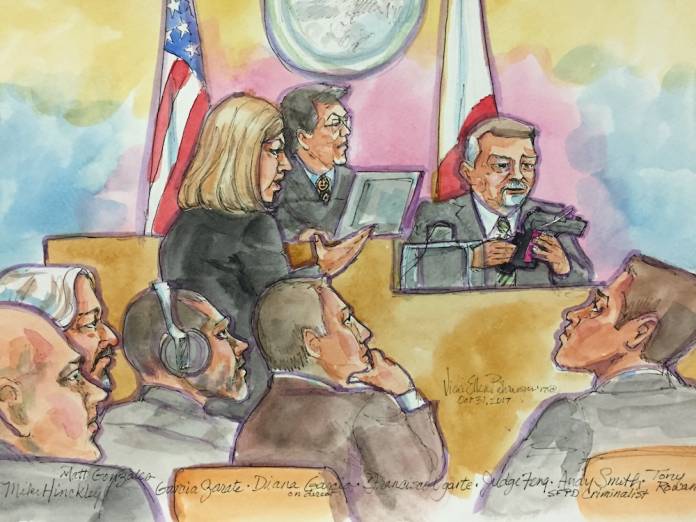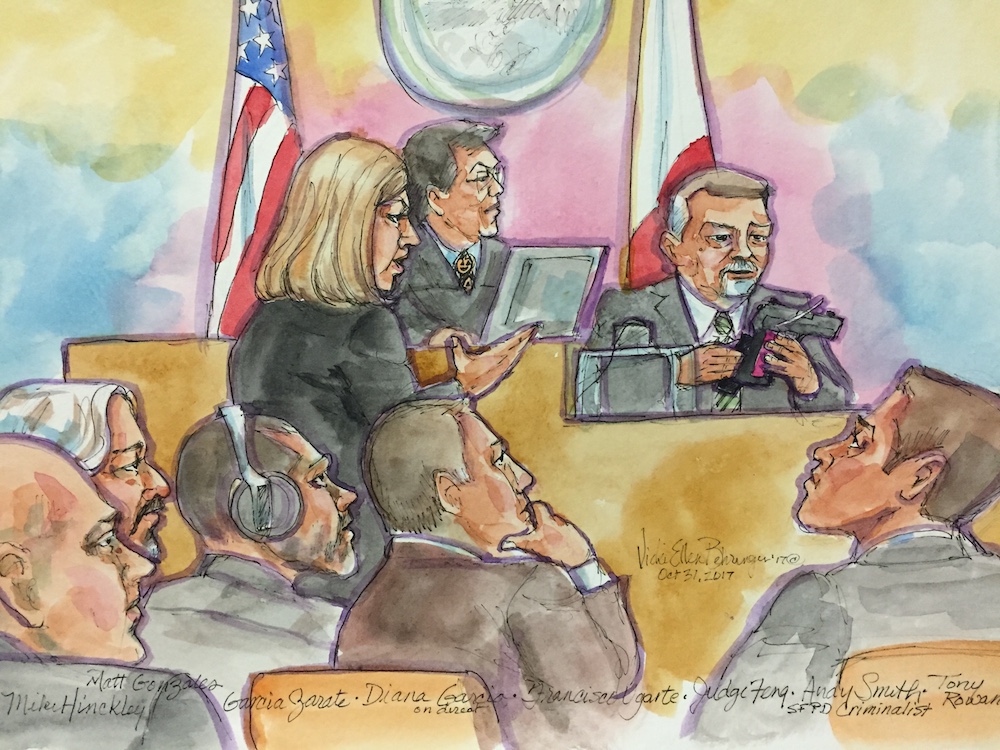
The trial of Jose Ines Garcia Zarate today focused on the gun that fired a fatal bullet at Kate Steinle on July 1, 2015. A firearms specialist, Gerald Andrew Smith, told the jury that the gun only discharges if the trigger is pulled — a claim disputed by the defense, which argues that the gun fired accidentally when Zarate handled it.
Smith, a supervising criminalist with the San Francisco police crime lab, tested the stolen handgun Zarate is accused of firing at Steinle.

Smith was prosecutor Diana Garcia’s witness on the sixth day of the trial. So far, the trail has largely focused on evidence on whether Zarate intended to shoot Steinle.
Matt Gonzalez, attorney for Zarate, argued that the gun could have been discharged by accident if, for example, the trigger was snagged on a piece of clothing.
In his opening statement Gonzalez said that Garcia Zarate found the gun wrapped in either a shirt or some other type of cloth on the pier when it went off.
“We want the judge to allow the jury to dry fire it in single-action mode, I am very confident that if you handle this firearm in single-action mode and depress the trigger, it’s very light,” Gonzalez said.
The alleged murder weapon is a Sig-Sauer P239 and can fire in single and double action mode.
Smith said the handgun also fired in double-action mode, which according to Smith requires at least nine pounds of pressure.
Gonzalez argued that the gun could have discharged in single-action mode, but Smith said he couldn’t say whether the bullet that struck Steinle was fired in single or double-action mode. The bullet fired from the gun ricocheted off the concrete on Pier 14 before it hit Steinle in the back.
Smith, who examined the bullet after it was removed during the autopsy, said that heavy gouges on one side of the bullet looked “very typical of a ricochet.”
Later in the day, Gonzalez noted that the Sig-Sauer had a history of accidental discharge. During a four-year period, from 2012 to 2015, the New York City Police Department reported that of 54 accidental firearm discharges, ten involved Sig-Sauers.
Gonzalez said that from 2005 to January 2011, the San Francisco Police Department reported 29 accidental discharges. During this time, the SFPD issued Sig-Sauers as its primary sidearm.
The trial resumes tomorrow, and Gonzales hopes to let the jury examine the gun to establish “how the trigger could have easily been pulled accidentally.”

The answer to the headline: NO
And all of this means nothing. Obviously, it is possible. The issue is not whether it is a regular occurrence, but whether it COULD have happened in this case. Of course, one would expect nothing less from our resident kook.
Again,
If you are Sergeant Raymond Hurley of the SFPD, I’ll gladly meet you on the stairs in front of 850 Bryant tomorrow morning at 8:30am.
If you’re a girl, you’re excused.
Go Astros!
h.
So ten misfires of the specific type of weapon over a 3-4 year period among the largest PD in the US? And 29 over a 6-7 year period among an unspecified number of this model?
Hardly indicative of regular misfirings (especially as I’ve no doubt that police officers may categorize all kinds of inappropriate firings as “misfirings”).
What a great World Series!